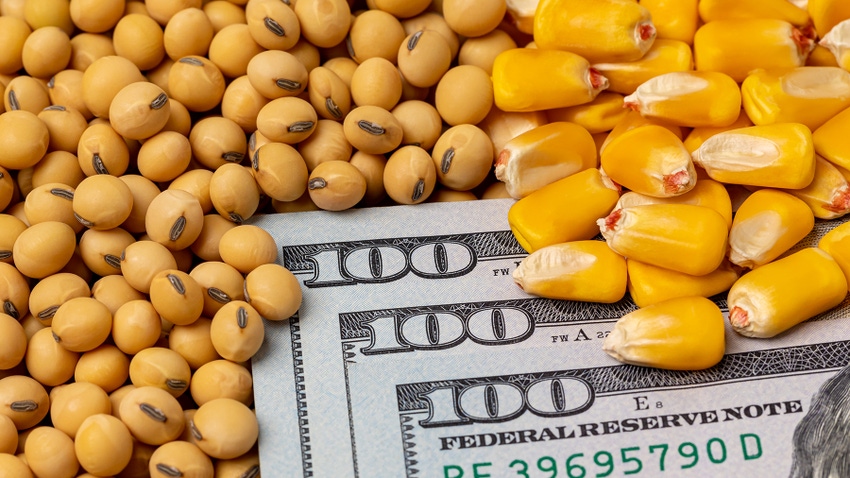August 22, 2023

Marketing your 2023 crop hasn't been significantly different in the past three years. It is quite challenging to market this year's crop if your goal is to simply capitalize on high prices.
We've witnessed sharp market swings due to weather and geopolitical events affecting supply and demand for all commodities. Predicting these market factors is impossible, underscoring the importance of incorporating options into your marketing plan. When the market allows you to adjust your options as it fluctuates, you are effectively handling volatility, thus reducing vulnerability to sudden market shifts.
Using options in real life
So, what occurs when we manage options? Let's delve into real-life examples of how this has unfolded so far in 2023.
Let's begin with corn. From August 23rd, 2022, until February 22nd, 2023, December 2023 corn futures mainly traded above $5.90. This span of six months positioned the corn market at levels that, for many, exceeded production costs. However, since February 22nd, the market has only spent seven days trading above $5.90.
Some farmers made sales for the 2023 season last winter, as they should have. Many also protected their unsold portions with put options. Put options establish a floor or worst-case scenario for the bushels not sold.
As the market began to decline, these puts gained value, offering reassurance that you were covered. When lows were reached in May, we were able to adjust these puts downward, resulting in profit for the producer.
Once this profit is realized, the market cannot take it away, even if the market were to rebound.
When the rain stopped, the market rallied. In fact, December corn futures surged by nearly $1.40 in a month. This seemed like an excellent opportunity for more sales, but many refrained due to the lack of rain.
I understand that perspective. If you genuinely believed that a crop might not grow at that point, making a sale would indeed be challenging. Nonetheless, the market provided a second chance to secure corn puts if you hadn't already. Instead of executing sales, you could have acquired put options at levels quite similar to those witnessed in the winter. However, as mentioned earlier, this rally was short-lived, as the market plummeted by $1.50 in just three weeks.
Amid this decline, these put options were adjusted downward, and the initial investment was fully offset. Producers now held cost-free put options.
The volatility in the corn market might not be fully resolved, but the assurance comes from knowing a floor is established and obtaining it didn't incur any expense due to our meticulous option management.
Soybean strategy
From November 2022 to mid-January 2023, November 2023 bean futures fluctuated between $13.80 and $14.10. This period presented a prime opportunity for sales and for obtaining put options on unsold quantities. Many producers opted for the $13.00 put. From January to the end of May, November beans plummeted to $11.30. Thanks to managing options, we managed to adjust these puts to $12.00, reaping a profit of 75 cents along the way.
In the following two months, beans rebounded all the way to $14.30, a $3.00/bushel gain. This represented another fantastic opportunity for sales, but for many, the reluctance stemmed from the absence of rain, rendering the sales decision far more uncertain. However, we were able to adjust those bean puts upward, with producers spending 35 cents to shift the puts from $12.00 to $13.40.
What was the result? After adjusting puts downward and accruing 75 cents, then subsequently moving them back up to $13.40 at a cost of 35 cents, a net gain of 40 cents emerges. If the initial put purchase cost 40 cents, you are currently in possession of free $13.40 puts.
It's important to recall that we started with $13.00 puts. Through all the volatility, the producer not only holds cost-free puts today but also at a level 40 cents higher than the initial purchase. This outcome wouldn't be achievable without vigilant put management when market conditions allow.
Store or sell?
Marketing for the 2023 crop isn't concluded yet. Harvest still awaits, and with it comes the decision to store or sell. If storage is the chosen route, securing a floor beneath your production remains crucial. However, the knowledge that we can adjust puts up and down as market conditions permit provides the confidence to navigate any potential market volatility we may encounter.
Contact Advance Trading at (800) 747-9021 or go to www.advance-trading.com.
Information provided may include opinions of the author and is subject to the following disclosures:
The risk of trading futures and options can be substantial. All information, publications, and material used and distributed by Advance Trading Inc. shall be construed as a solicitation. ATI does not maintain an independent research department as defined in CFTC Regulation 1.71. Information obtained from third-party sources is believed to be reliable, but its accuracy is not guaranteed by Advance Trading Inc. Past performance is not necessarily indicative of future results.
The opinions of the author are not necessarily those of Farm Futures or Farm Progress.
About the Author(s)
You May Also Like






